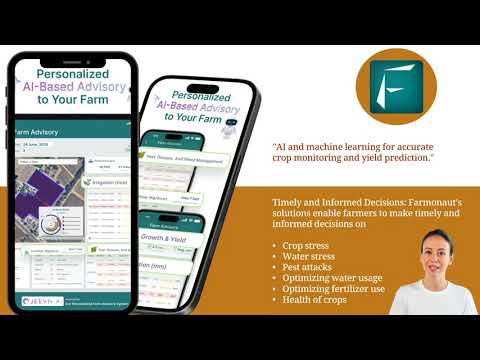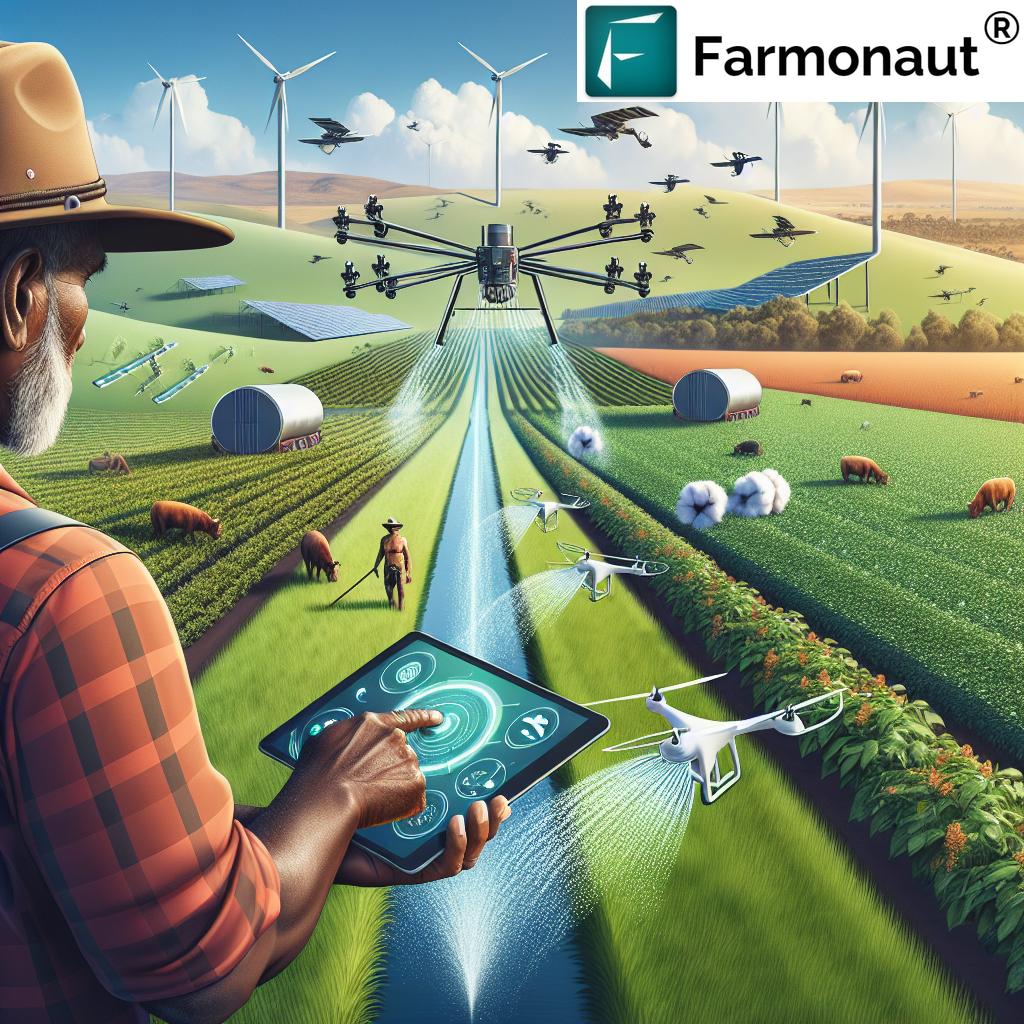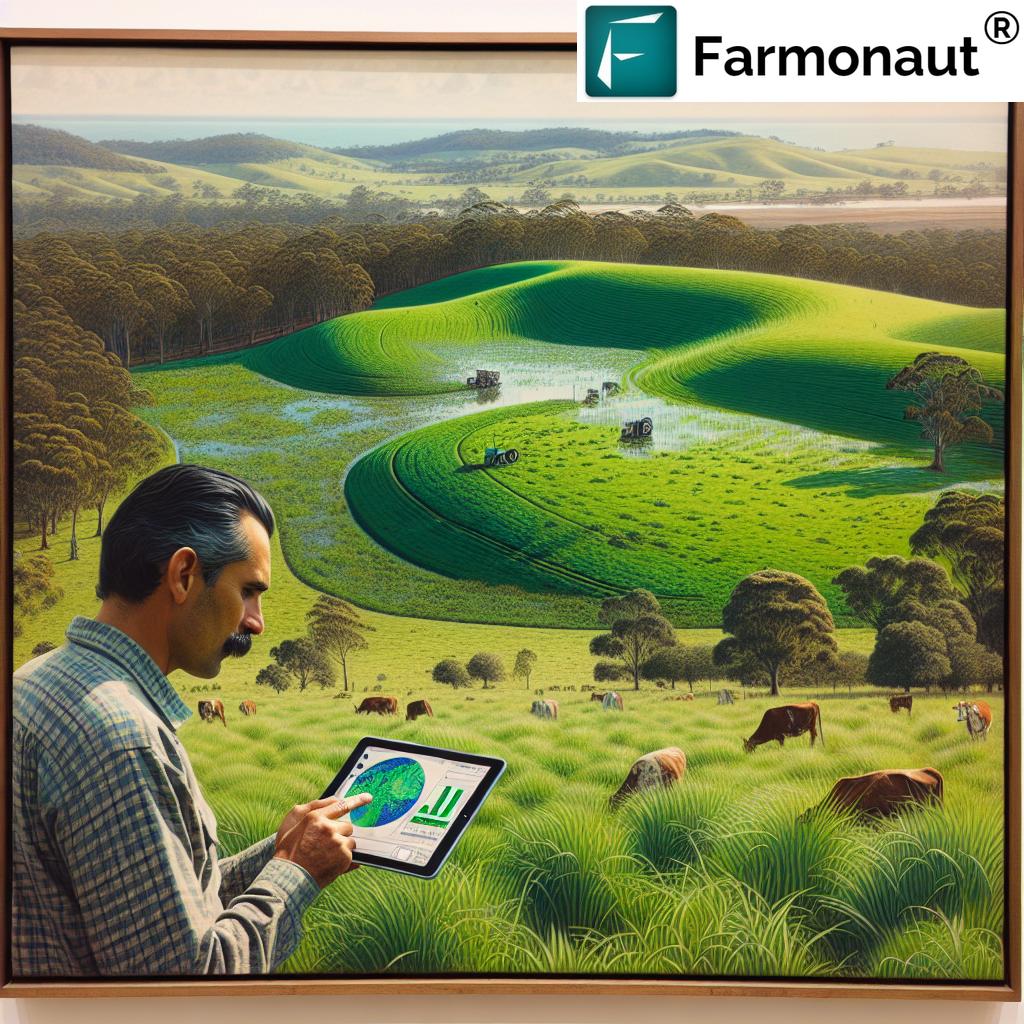Sustainable Vineyard Management: Transforming Barossa Valley’s Dryland Farms into Premium Wine Grape Havens
“Barossa Valley vineyards transformed from dryland dairy farms to produce premium wine grapes, including Shiraz and Cabernet Sauvignon.”
Welcome to the heart of South Australia’s wine country, where we’re witnessing a remarkable transformation. The Barossa Valley, once known for its dryland dairy farms, has evolved into a mecca for premium wine grape production. In this comprehensive exploration, we’ll delve into the innovative vineyard management techniques that have revolutionized viticulture in this region, focusing on sustainable practices that have turned these farms into havens for world-class Shiraz and Cabernet Sauvignon grapes.
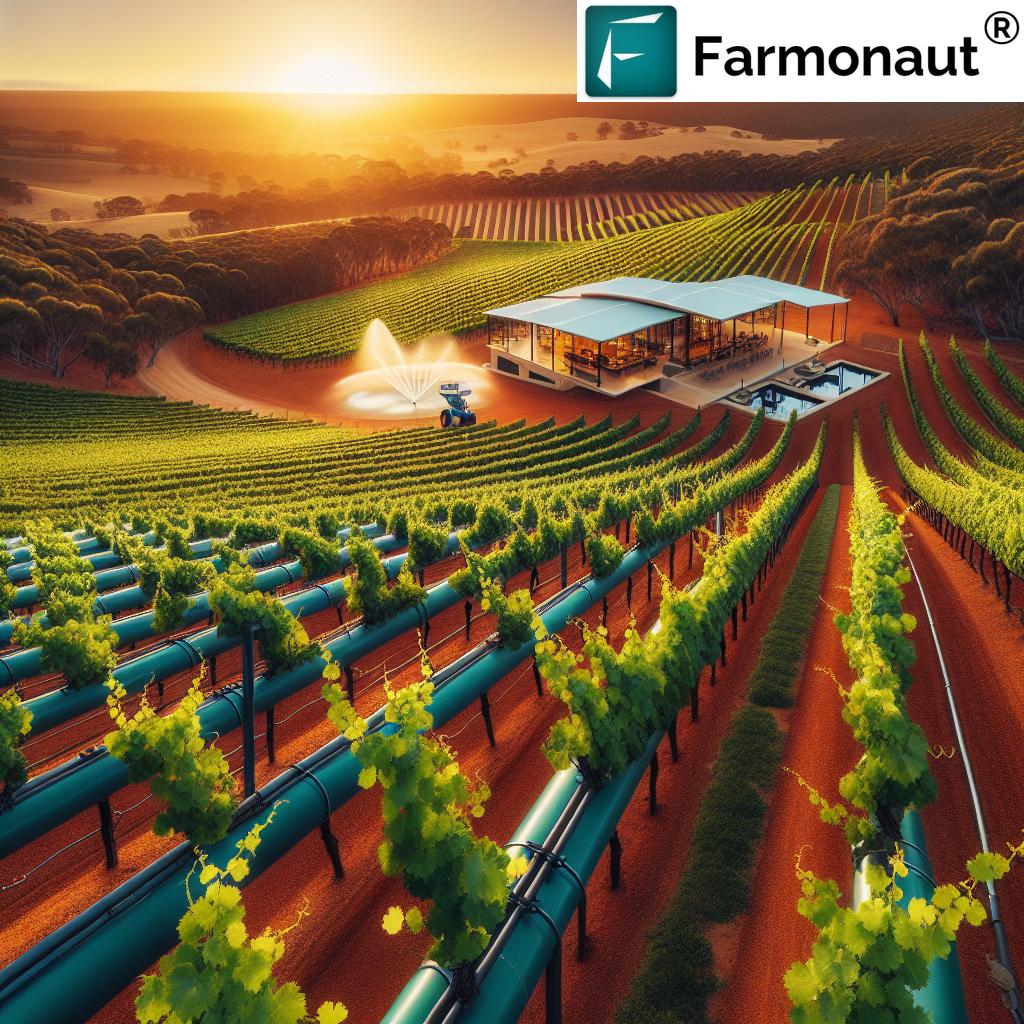
The Barossa Valley: A Viticultural Paradise
Nestled just 60 kilometers northeast of Adelaide, the Barossa Valley has emerged as one of Australia’s most prestigious wine regions. Its unique climate and soil conditions have made it an ideal location for growing premium wine grapes, particularly Shiraz and Cabernet Sauvignon. Let’s explore the factors that contribute to the valley’s viticultural success:
- Climate: The Barossa Valley enjoys a Mediterranean climate with warm, dry summers and cool, wet winters. This climate is perfect for ripening grapes, resulting in rich, full-bodied wines.
- Soil: The region boasts a diverse range of soil types, from red-brown earth over limestone to sandy loams. This variety contributes to the complex flavors found in Barossa wines.
- Elevation: Vineyards in the valley are situated at elevations ranging from 200 to 550 meters above sea level, providing different microclimates that influence grape characteristics.
These natural advantages, combined with innovative vineyard management techniques, have transformed the Barossa Valley from a region of dryland dairy farms into a powerhouse of premium wine grape production.
From Dairy to Vineyard: A Sustainable Transformation
The journey from dryland dairy farming to premium viticulture in the Barossa Valley is a testament to sustainable agricultural practices and innovative management techniques. This transformation has not only revolutionized the local economy but also set new standards in environmental stewardship.
At Farmonaut, we understand the importance of such transformations in agriculture. Our satellite-based farm management solutions provide valuable insights that can aid in such transitions. For more information on how we support sustainable farming practices, visit our web app.

Sustainable Vineyard Management Techniques
The transformation of Barossa Valley’s dryland farms into premium wine grape havens has been driven by the adoption of sustainable vineyard management techniques. These practices not only enhance grape quality and yield but also promote environmental conservation. Let’s explore some of these key techniques:
1. Advanced Irrigation Systems
One of the most significant advancements in Barossa Valley viticulture has been the implementation of sophisticated irrigation systems. Drip irrigation, in particular, has revolutionized water management in vineyards.
- Water Efficiency: Drip irrigation delivers water directly to the grapevine’s root zone, minimizing water loss through evaporation and runoff.
- Precision Control: Vineyard managers can precisely control the amount and timing of water application, tailoring irrigation to the specific needs of different grape varieties and soil types.
- Quality Enhancement: Controlled water stress through regulated deficit irrigation can improve grape quality by concentrating flavors and colors.
At Farmonaut, we offer satellite-based crop health monitoring that can complement these irrigation systems by providing real-time data on soil moisture levels. Learn more about our services through our Android app.

2. Sustainable Soil Management
Maintaining soil health is crucial for producing high-quality wine grapes. Barossa Valley vineyards have adopted several sustainable soil management practices:
- Cover Cropping: Planting cover crops between vine rows helps prevent soil erosion, improves soil structure, and increases organic matter content.
- Composting: Many vineyards use organic compost to enrich the soil, reducing the need for synthetic fertilizers.
- Minimal Tillage: Reducing soil disturbance helps maintain soil structure and promotes beneficial microbial activity.
These practices not only enhance soil health but also contribute to the unique terroir of Barossa Valley wines.
3. Integrated Pest Management (IPM)
IPM is a holistic approach to pest control that minimizes the use of chemical pesticides. In Barossa Valley vineyards, this includes:
- Biological Control: Encouraging natural predators of grape pests.
- Cultural Practices: Pruning and canopy management to reduce pest-friendly environments.
- Monitoring: Regular vineyard inspections to detect pest issues early.
By reducing reliance on chemical interventions, IPM helps maintain the ecological balance in vineyards and ensures the production of healthier grapes.
4. Precision Viticulture
Precision viticulture involves using technology to optimize vineyard management. In the Barossa Valley, this includes:
- GPS Mapping: Creating detailed maps of vineyard blocks to track variations in soil type, grape quality, and yield.
- Remote Sensing: Using satellite imagery and drones to monitor crop health and identify problem areas.
- Variable Rate Technology: Applying inputs like water and fertilizer at variable rates based on specific vineyard needs.
Farmonaut’s satellite-based farm management solutions align perfectly with these precision viticulture practices. Our technology provides valuable insights that can help vineyard managers make data-driven decisions. Explore our services through our iOS app.

Cultivating Premium Wine Grapes: Shiraz and Cabernet Sauvignon
The Barossa Valley is renowned for its Shiraz and Cabernet Sauvignon grapes, which produce some of Australia’s most prestigious wines. Let’s explore the unique characteristics of these varieties and how sustainable management practices contribute to their quality:
Shiraz (Syrah)
Shiraz is the flagship grape variety of the Barossa Valley, known for producing full-bodied, rich wines with intense flavors.
- Climate Adaptation: Shiraz thrives in the warm climate of the Barossa Valley, developing deep color and concentrated flavors.
- Water Management: Controlled water stress through precise irrigation enhances the grape’s flavor intensity and phenolic compounds.
- Canopy Management: Careful pruning and leaf removal ensure optimal sun exposure, contributing to the development of rich, ripe fruit flavors.
Cabernet Sauvignon
While less prevalent than Shiraz, Cabernet Sauvignon from the Barossa Valley is highly regarded for its depth and complexity.
- Terroir Expression: The varied soil types of the Barossa Valley contribute to the complex flavor profile of Cabernet Sauvignon wines.
- Sustainable Pest Management: IPM practices help maintain vine health, crucial for the long ripening period required by Cabernet Sauvignon.
- Precision Harvesting: Using data from precision viticulture techniques, vineyard managers can determine the optimal harvest time for peak grape quality.
“Advanced irrigation systems in Barossa Valley vineyards enhance grape quality and yield, contributing to world-renowned Australian wines.”
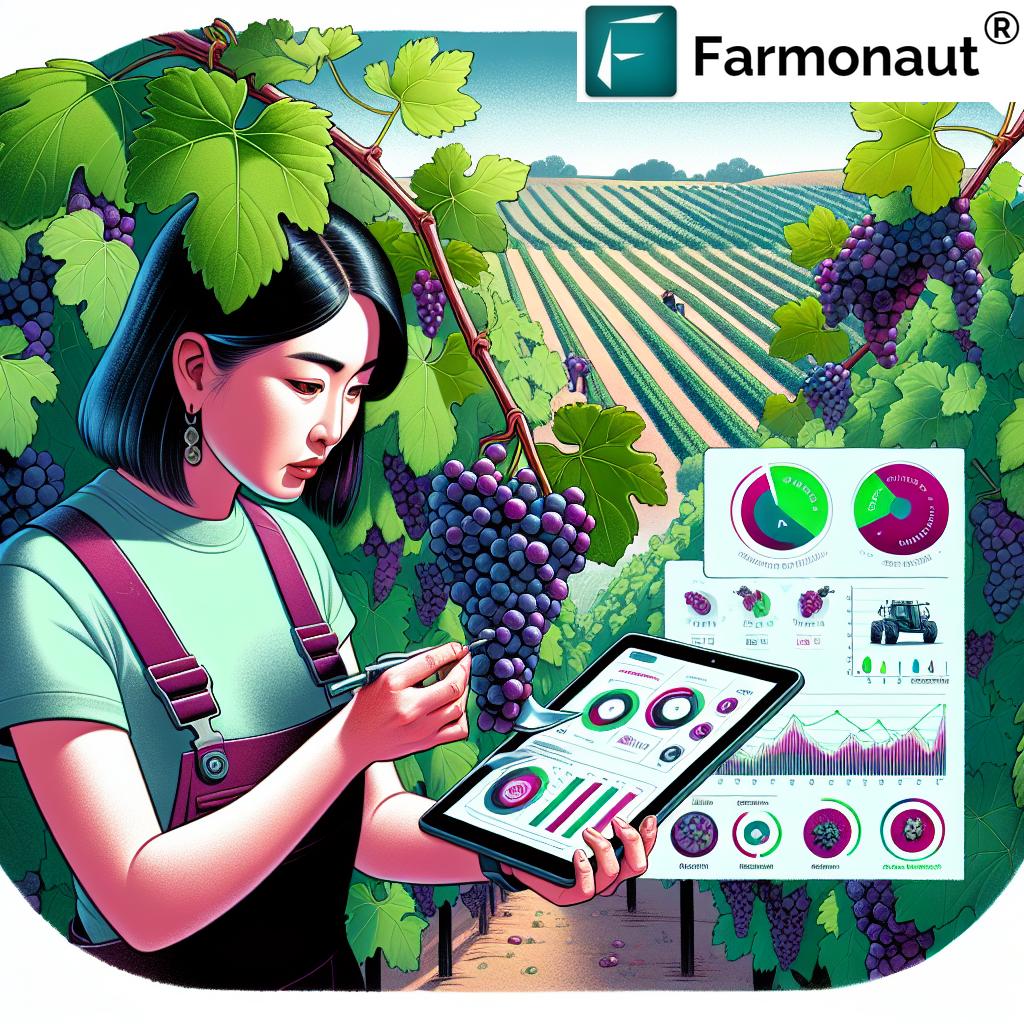
The Economic Impact of Vineyard Conversion
The transformation of Barossa Valley’s dryland farms into premium vineyards has had a significant economic impact on the region:
- Job Creation: The wine industry has created numerous jobs in viticulture, winemaking, and wine tourism.
- Increased Land Value: The conversion to vineyards has substantially increased the value of agricultural land in the region.
- Tourism Boost: Wine tourism has become a major economic driver, attracting visitors from around the world.
- Export Revenue: Barossa Valley wines command premium prices in international markets, contributing to Australia’s export earnings.
This economic transformation demonstrates the value of converting suitable farmland to vineyards when combined with sustainable management practices.
Sustainable Vineyard Management Techniques in Barossa Valley
| Management Technique | Traditional Method | Sustainable Approach | Environmental Impact |
|---|---|---|---|
| Irrigation System | Flood Irrigation | Drip Irrigation | 40% less water usage |
| Water Management | Fixed Scheduling | Soil Moisture Monitoring | Optimized water use, reduced runoff |
| Soil Conservation | Frequent Tilling | Cover Cropping | Improved soil health, reduced erosion |
| Pest Control | Chemical Pesticides | Integrated Pest Management | 70% reduction in chemical use |
| Harvesting Method | Manual, Time-based | Precision Harvesting | Reduced waste, improved quality |
The Role of Technology in Modern Viticulture
Technology plays a crucial role in the sustainable management of Barossa Valley vineyards. Advanced tools and systems help vineyard managers make informed decisions and optimize their operations:
- Satellite Imagery: Regular satellite monitoring provides valuable data on crop health, allowing for early detection of issues.
- Weather Stations: On-site weather stations help in predicting frost risks and planning irrigation schedules.
- Soil Sensors: These devices provide real-time data on soil moisture and nutrient levels, enabling precise irrigation and fertilization.
- Drone Technology: Drones equipped with multispectral cameras can capture detailed images of vineyard blocks, helping identify areas that need attention.
At Farmonaut, we specialize in providing cutting-edge satellite-based farm management solutions that can greatly benefit vineyard operations. Our technology complements these modern viticultural practices, offering real-time insights and data-driven recommendations. To learn more about how our solutions can enhance your vineyard management, visit our API Developer Docs.
The Future of Sustainable Viticulture in Barossa Valley
As we look to the future, the Barossa Valley’s wine industry continues to evolve, embracing new technologies and sustainable practices:
- Climate Adaptation: With changing climate patterns, vineyards are exploring new grape varieties and management techniques to ensure long-term sustainability.
- Carbon Neutral Winemaking: Many wineries are working towards carbon neutrality through renewable energy use and carbon offset programs.
- Biodiversity Enhancement: Increasing focus on biodiversity within and around vineyards to promote ecosystem health and natural pest control.
- Water Conservation: Ongoing research into drought-resistant rootstocks and advanced water-saving technologies.
These forward-thinking approaches ensure that the Barossa Valley will continue to produce world-class wines while maintaining its commitment to environmental stewardship.
Conclusion: A Model of Sustainable Transformation
The transformation of Barossa Valley’s dryland farms into premium wine grape havens is a remarkable story of innovation, sustainability, and economic success. By adopting advanced vineyard management techniques, leveraging technology, and focusing on sustainable practices, the region has not only produced some of the world’s finest wines but also set a benchmark for environmentally responsible agriculture.
As we’ve explored throughout this article, the key to this success lies in the careful balance of traditional winemaking knowledge with modern, sustainable practices. From advanced irrigation systems to precision viticulture, every aspect of vineyard management in the Barossa Valley is geared towards producing high-quality grapes while preserving the environment.
At Farmonaut, we’re proud to support such sustainable agricultural practices with our cutting-edge satellite-based farm management solutions. Our technology can provide valuable insights for vineyard managers, helping them make data-driven decisions that enhance both productivity and sustainability. To see how our solutions can benefit your agricultural operations, explore our API.
The Barossa Valley’s journey from dryland dairy farms to premium wine grape production serves as an inspiration for agricultural regions worldwide. It demonstrates that with the right combination of innovation, sustainability, and respect for the land, it’s possible to create a thriving, environmentally responsible agricultural industry that produces world-class products.
As we raise a glass of Barossa Valley Shiraz or Cabernet Sauvignon, we’re not just tasting a fine wine – we’re experiencing the result of a remarkable transformation, one that has set new standards in sustainable vineyard management and premium wine grape production.
FAQ Section
- Q: What makes the Barossa Valley ideal for wine grape production?
A: The Barossa Valley’s Mediterranean climate, diverse soil types, and varying elevations create perfect conditions for growing premium wine grapes, especially Shiraz and Cabernet Sauvignon. - Q: How has technology improved vineyard management in the Barossa Valley?
A: Technologies like satellite imagery, precision viticulture, and advanced irrigation systems have enabled more efficient water use, better pest management, and improved grape quality. - Q: What sustainable practices are common in Barossa Valley vineyards?
A: Common sustainable practices include drip irrigation, integrated pest management, cover cropping, and minimal tillage, all aimed at reducing environmental impact while enhancing grape quality. - Q: How has the conversion to vineyards impacted the local economy?
A: The vineyard conversion has created jobs, increased land values, boosted tourism, and generated significant export revenue, transforming the region’s economic landscape. - Q: What challenges do Barossa Valley vineyards face in the future?
A: Key challenges include adapting to climate change, maintaining water sustainability, and continuing to innovate in sustainable practices to ensure long-term viability.




